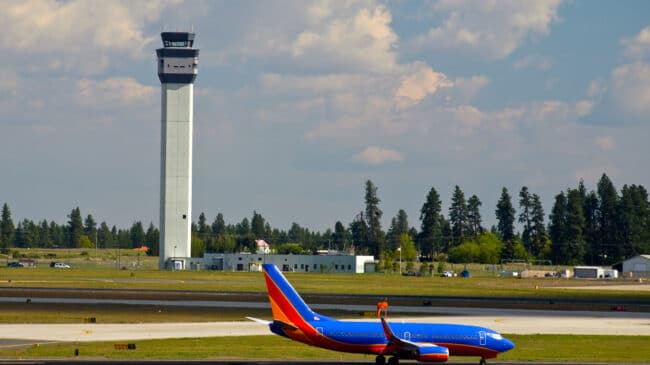The United States lags far behind peer countries in airport privatization. Only one U.S. passenger hub has been successfully privatized to date—Luis Muñoz Marín International in San Juan, Puerto Rico, privatized in 2013. The annual Skytrax survey of passengers’ airport preferences shows that of the top 25 global airports, 10 are privatized. George Bush Intercontinental, a public commercial service airport owned by the city of Houston, is the only U.S. airport to break into the top 25 rankings (at 25th). But privatization could help bring needed improvements to U.S. airports while containing costs and shifting fiscal risk away from taxpayers.
Privatization could bring needed improvements to U.S. airports while containing costs and shifting fiscal risk away from taxpayers. And, by minimizing parochial politics in the management of airports, U.S. airports could work more productively with their airline customers to deliver service and facility improvements. Unfortunately, the Federal Aviation Administration’s (FAA) existing Airport Investment Partnership Program (AIPP) has been underused.
In August, the Tweed New Haven Airport Authority voted to approve a 43-year public-private partnership lease with Avports. While this shows continued interest in airport privatization in the United States, Tweed New Haven is a small passenger airport that currently offers approximately 500 scheduled flights per year and is served by a single carrier, Avelo Airlines. The Federal Aviation Administration confirmed to me by email that Tweed New Haven has not yet applied for the Airport Investment Partnership Program as of Sept. 23. Reforming the AIPP by relaxing the current airline approval requirements to enter the program could increase interest in U.S. airport privatization among large commercial service airports.
The basic structure of the AIPP was initially established by the FAA Reauthorization Act of 1996. The pilot program allowed for the participation of up to five airports, although this was limited to one large hub airport, and one slot was reserved for a general aviation airport. Privatization of commercial service airports under the pilot program was limited to leases only, so outright sales to private airport companies were prohibited. The pilot program also instituted double-supermajority airline approval requirements, whereby a commercial service airport applying to the FAA must secure the support of 65% of airlines serving the airport as well as by airlines accounting for 65% of the annual total landed weight at the airport.
The 2012 FAA reauthorization increased the number of pilot program slots from five to 10. Major changes came in the FAA Reauthorization Act of 2018, which replaced the pilot program with the permanent Airport Investment Partnership Program that exists today. This eliminated the cap on the number of participating airports and authorized joint public-private airport ownership, but the law retained the double-supermajority airline approval requirements created in the 1996 pilot.
Since the enactment of the 2018 law, no additional hub airports have entered the AIPP despite the high value of these assets. Reason Foundation’s Robert Poole examined 31 large and medium hub U.S. airports in a 2021 study. Using recent international airport transactions, he estimated that 25 of the 31 airports could generate lease proceeds that could completely pay off their existing airport debts. And nine of those 31 airports could generate lease proceeds to more than make up for their government owners’ unfunded public employee pension liabilities.
To promote more airport use of the AIPP, Congress should consider amending clauses (i) and (ii) of 49 U.S.C. § 47134(b)(1)(A) to read:
(i) in the case of a primary airport, by more than 50 percent of the scheduled air carriers serving the airport and by scheduled and nonscheduled air carriers whose aircraft landed at the airport during the preceding calendar year, had a total landed weight during the preceding calendar year of more than 50 percent of the total landed weight of all aircraft landing at the airport during such year; or
(ii) in the case of a nonprimary airport, by the Secretary after the airport has consulted with more than 50 percent of the owners of aircraft based at that airport, as determined by the Secretary.
By unlocking the value of airports through privatization, both the public and private sectors could enjoy substantial benefits—in addition to passengers who could enjoy modernized, world-class airport facilities. To encourage more interest in the AIPP among major commercial service airports, Congress could reform the double-supermajority airline approval requirements by lowering the approval thresholds to simple majorities. With less daunting approval requirements, more airports may choose to initiate privatization discussions with their airline customers.

